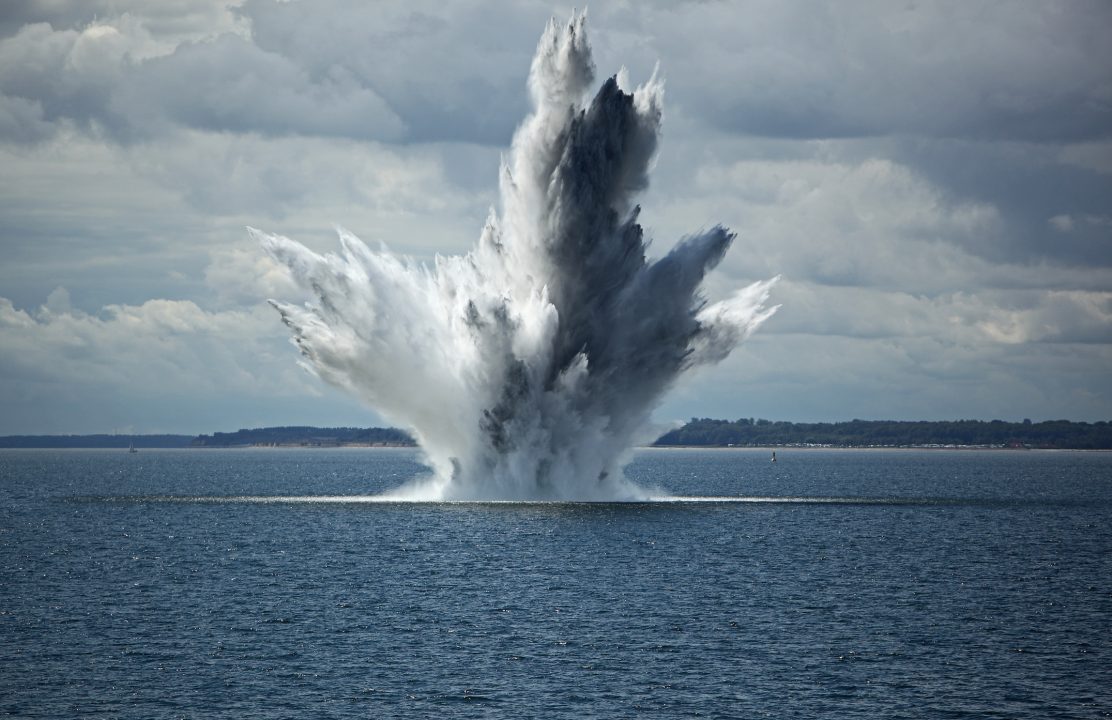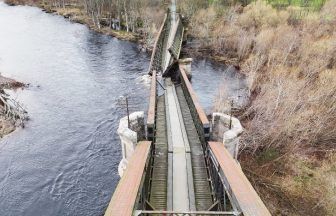Campaigners have accused the Scottish Government of “dragging its feet” over a ban on the use of high-powered explosives as a means of clearing historic wartime ordnance amid fears it is “damaging” marine life.
The Stop Sea Blasts group have demanded discharges used to rid UK waters of unexploded WW2 bombs are replaced with ‘slow burn’ methods which will not shatter the hearing of marine mammals.
The UK Government has already signalled its intention to use “alternatives to high order detonation” last year despite arguments from Royal Navy bosses over the efficacy of deflagration techniques.
Actress Joanna Lumley supported the campaign following the death of more than a dozen pilot whales off Sutherland in 2011.
However conservationists have now pleaded with lawmakers at Holyrood to follow in the footsteps of their London equivalents ahead of a debate on the issue.
The Scottish Government says it is awaiting the results of trials conducted by Danish navy bosses before pressing ahead with any legislation.
A spokesperson for the Stop Sea Blasts group told STV News: “We launched our Stop Sea Blasts campaign in order to highlight the damage that can be caused by offshore ordnance clearances – like at the Kyle of Durness in 2011 – and to promote more environmentally friendly methods of clearance.
“One of these methods is deflagration, which burns out rather than detonates munitions, reducing the noise output by factors of up to several hundred times.
“After dragging its feet for several years now, it is high time the Scottish Government listened to our concerns and mandated the use of more environmentally friendly techniques.”
It is estimated 100,000 tonnes of explosives remain in Britain’s seas – with some weighing up to half a tonne each.
Munitions need to be safely removed for the development of marine projects such as wind farms, but research has found the hearing of dolphins and whales – used for communication and navigation – is being affected by underwater blasts.
‘Low-order’ deflagration, in which magnesium cones are fired into the devices causing the explosive elements to burn themselves out from the inside without detonating, have been cited as a preferred method.
A total of 19 whales eventually died in the Kyle of Durness in July 2011 when ordnance was cleared in the area, forcing the the pod of 60 into low tide.
A department for environment, food and rural affairs later concluded blasts had upset ‘auditory systems’ of nearby marine life, leading to a mass stranding event.
However navy chiefs claim the use of the technology is “unsuitable” in underwater settings, adding a “risk to life” remains if the bombs are not properly disposed of.
A spokesperson said: “The Royal Navy takes its responsibilities to the environment very seriously.
“Slow burn explosives are not suitable for removing legacy and unstable ordnance as there is no guarantee they would fully destroy the ordnance. This means remains could be washed up on shore, presenting further risk to life.”
Liberal Democrat MSP Beatrice Wishart is set to bring the debate before Holyrood in the coming weeks.
A Scottish Government Spokesperson said: “We are awaiting the findings of recent trials conducted by the Danish Navy – the outcome of which, particularly as regards safety, will support regulators in their decision making.
“We are a signatory of a Joint Interim Position Statement, alongside other UK regulators and Statutory Nature Conservation Bodies, which sets out our preference for low noise techniques to be used to clear unexploded ordnance, and an expectation that low noise methods is prioritised by developers.”
Follow STV News on WhatsApp
Scan the QR code on your mobile device for all the latest news from around the country


 iStock
iStock























